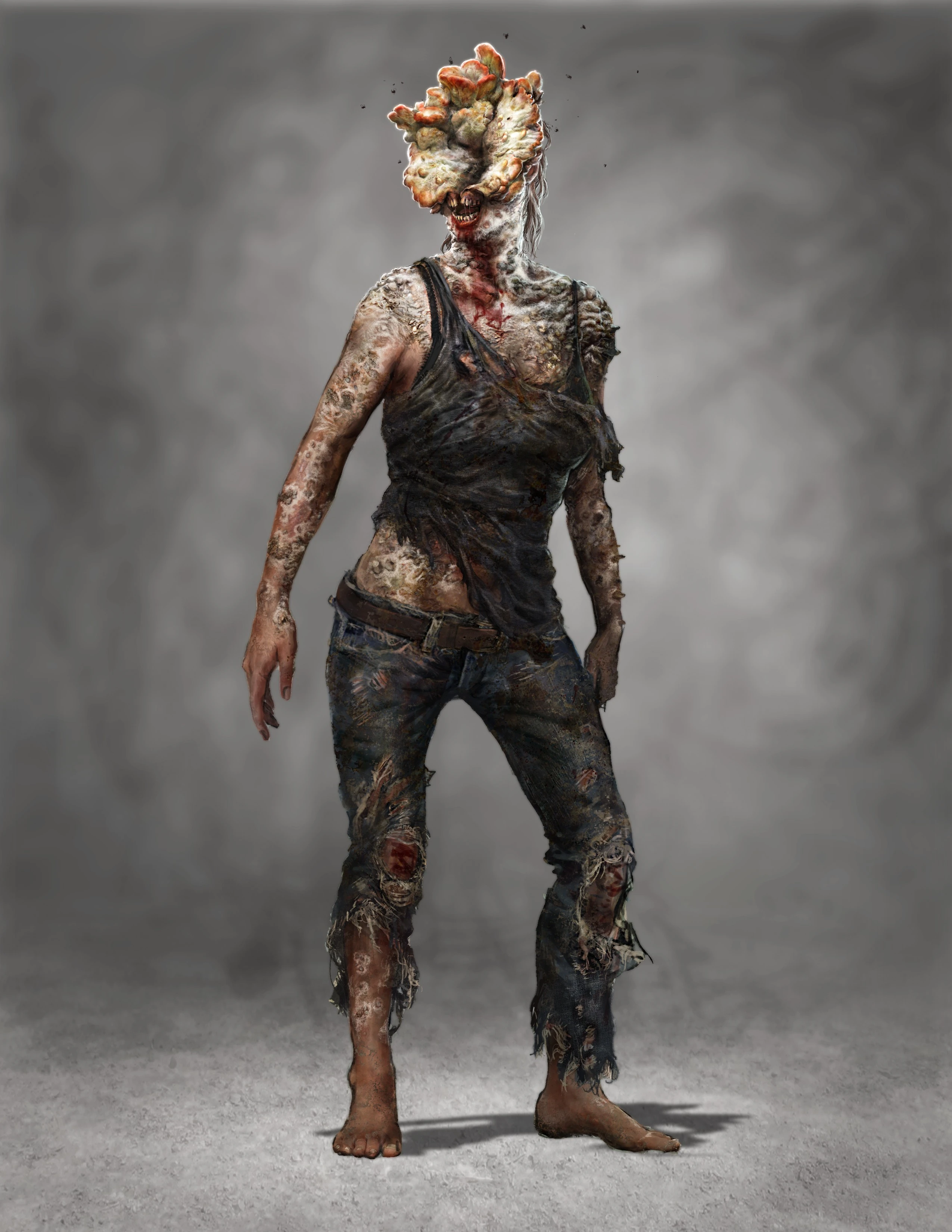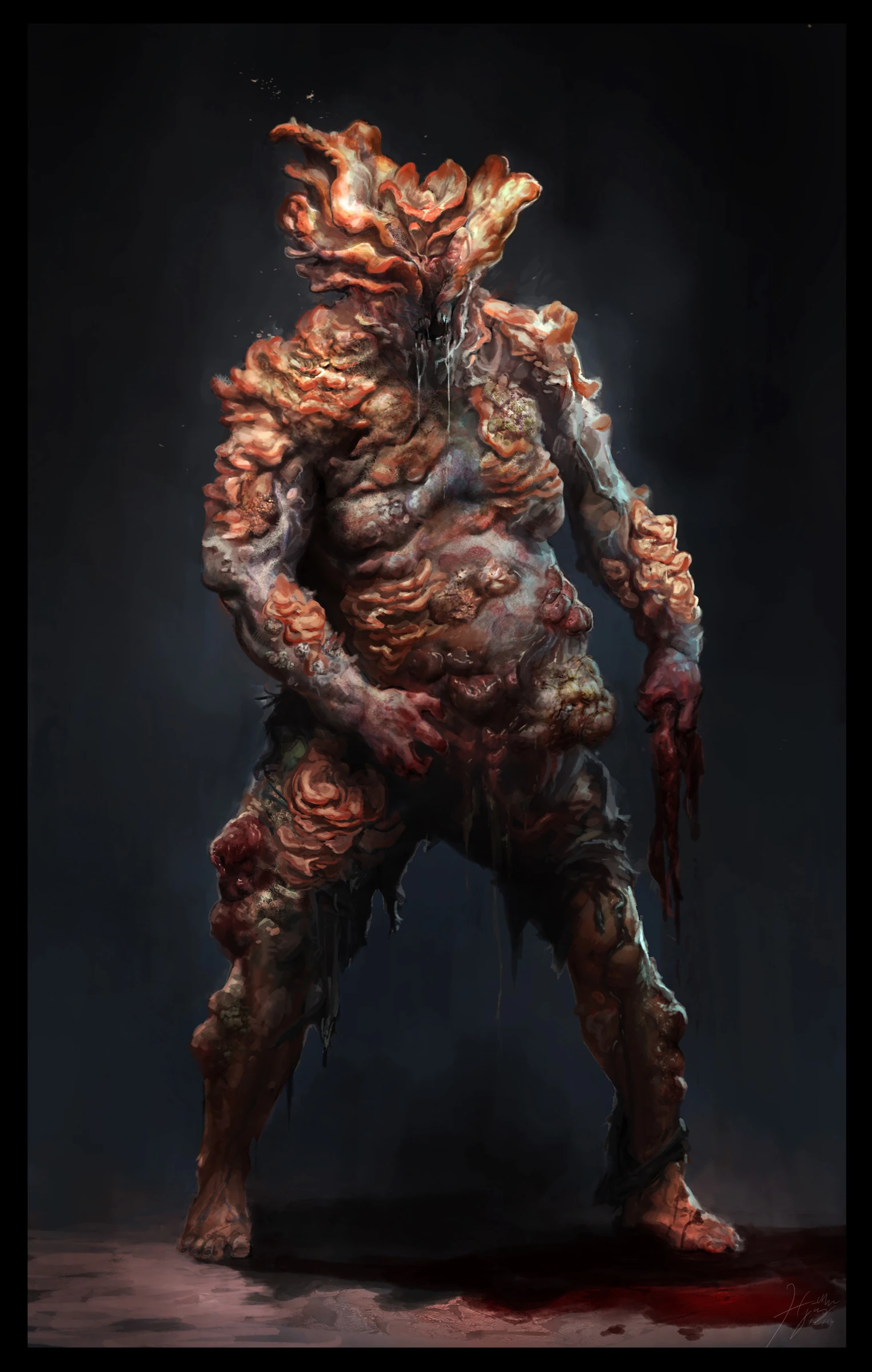I have mentioned Pokémon before in my articles, but have only in passing. I now think it is time to take a scientific approach and look at these interesting, fictional organisms through the lens of science. Before we explore the title question, we first need to define what constitutes an animal. Animalia is one of the seven (as per the most recent revision of biological classification) kingdoms of life. The others are Plantae, Fungi, Protozoa, Chromista (diatoms, brown algae, etc.), Archaea, and Bacteria. Animals are multicellular, eukaryotic, heterotrophic organisms that lack cell walls. The cells are grouped into tissues, with each tissue having a specific purpose. Sponges, which are essentially just a clump of cells without any body symmetry, are the exception. As there are no sponge Pokémon to date, we do not have to worry about this. Animals must be able to move voluntarily and independently at some stage in their lives and develop until they reach a fixed body plan.

Protista is used here rather than Protozoa, but they both constitute the same types of organisms.
So, are Pokémon animals? The answer is, it’s hard to tell, but they probably are. There isn’t a way to know whether or not a Pokémon’s cells have cell walls because there is no data about their cellular structure, so we don’t have this to go on. All Pokémon appear to have body symmetry, one exception being Ditto. Ditto throws a wrench into the equation because it has an amorphous form, but can reorganize its body structure to take on the appearance and abilities of any other Pokémon. However, Ditto may be the result of a failed human experiment to clone Mew, the ancestor of all Pokémon. For this reason, we will exclude Ditto from our discussion because it was created through human intervention and did not evolve naturally. We’ll come back to Pokémon “evolution” later.
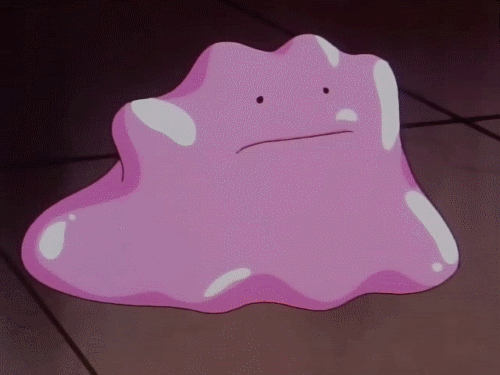
This Ditto is sad because it doesn’t fit in.
Another stumper is when we start to consider Pokémon diets. Most seem to be heterotrophs, like animals, but some are described feeding exclusively on rock or metal (lithotrophs), while some can photosynthesize (autotrophs). Heterotrophs are organisms that must use organic carbon sources for energy because they cannot fix it themselves like other organisms. Plants can. They convert light energy into more complex organic compounds through photosynthesis. A handful of Pokémon actually are able to sustain themselves on nothing more than electricity. Does this mean that these rock, metal, and electron eating Pokémon species are not animals? Not necessarily. We haven’t learned all there is to know about Animalia yet and it is possible that there are animals yet to be discovered with highly diverse diets that deviate from the standard heterotroph. Many of Pokémon are also capable of enjoying Pokémon food that is made from berries and other organic material, as well as treats such as Pokéblocks (candy for Pokémon) or Poffins (a pastry-like Pokémon treat). Even Pokémon of the Ghost Type, the majority of which appear to be non-corporeal beings, will take Pokémon food if it is offered.
Many real life animals will often consume non-organic substances such as clay to supplement their diets or neutralize toxins in their food. However, this alone is not enough to sustain them. Animals MUST ingest other living things or their products to survive. There is nothing that says that the stranger Pokémon species need to eat something other than iron ore or enough dirt to make an entire mountain.

Aron, the iron eater.
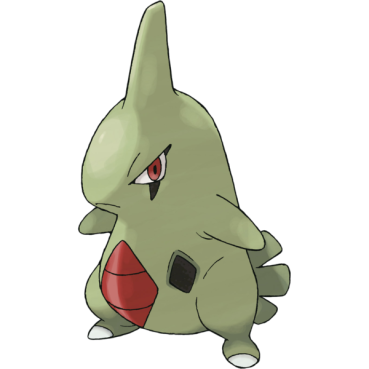
Larvitar, the mountain eater.
Some Pokémon are very plant-like. These are the Grass Type Pokémon. Many of them have abilities like Chlorophyll or Solar Power. Some of these Pokémon species look more like animals that others, though, so how can they be plants? The answer is: they don’t have to be if they participate in mutualism. Mutualism is a form of symbiosis in which both parties benefit from an interaction. It could be that all of the photosynthesizing Pokémon are hosts for special algae or other organisms that can fix carbon so that it is usable. In return, these Pokémon provide their little sun factories with precious nutrients. A few existing animals do this too, so it’s not really that out there to consider it in Pokémon.
Pokémon fill all the requirements of being animals except for their diets. We are still learning much about many strange metabolisms and food preferences in the animal kingdom, so I don’t think we can exclude Pokémon from Animalia just for this, as I mentioned above. We’ll keep exploring their biology.
Getting back to that “evolution” thing. Most, but not all Pokémon, go through “evolution”. Pokémon “evolution” is different from the Darwinian evolution that we know and love. It is predictable and occurs within the same individual. Pokémon evolution is analogous to metamorphosis in the real world. In fact, there are some Pokémon species that perfectly follow metamorphosis in real animals like butterflies, moths, and frogs. Pokémon can also be confirmed to have a Darwinian evolutionary history simply because of the fact that there are “ancestor Pokémon” like Mew that contain the basic genetic blueprints of all future Pokémon, and “fossil Pokémon” such as Omanyte and Anorith. Natural Selection seen in the Pokémon world emphasizes the presence of Darwinian evolution as well. Different regions provide a wide variety of habitats and the Pokémon found in these areas are well adapted to the conditions. This suggests that there is a process of adaptation over generations of Pokémon that resulted in the ones we see today that thrive in their respective environments.

Mew, the ridiculously cute ancestor of all Pokémon.
At this point, I feel that is safe to place Pokémon within Animalia. If they existed, they would make up their own separate phylum. Pokémon are incredibly diverse, and many don’t even look like they are related at all. But, just take a look at our own phylum, Chordata. There is a ridiculous amount of variation within it. Chordata contains animals ranging from simple, filter feeding tunicates, all the way to elephants, whales, birds, snakes, and of course, humans. Pokémon can take the form of gargantuan, dragon like creatures, or something as out there as a living pile of garbage. As briefly mentioned, there are different Types (18 in all) of Pokémon. Pokémon of the same type share similar abilities, weaknesses, and strengths. There is a Primary Type, and a Secondary Type. These Types could be thought of as analogous to classes within biology. Secondary Types would comprise the subclasses. For example, a Pokémon could be of the Fire Type class, but also belong to the Ground Type as its subclass.
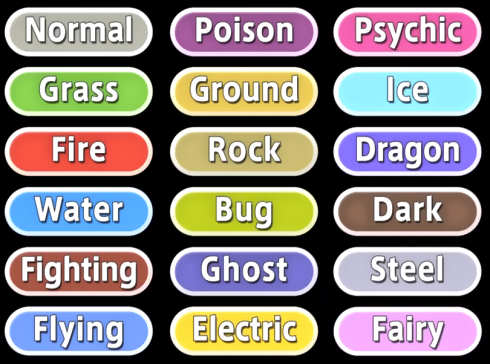
The 18 Types of Pokémon.
But why did I choose class rather than some other higher or lower taxonomic ranking? It is because class seems to fit the variation observed within Pokémon types quite nicely and is a good reflection of a class such as Mammalia (our class). Every member of Mammalia is, by definition, a mammal. The blue whale is the most massive animal to have ever lived on this planet, yet falls into the same biological class as the tiny, extinct Batodonoides vanhouteni (a shrew-like mammal) and egg-laying mammals like platypuses and echidnas. Though they differ greatly, all these animals have a handful of defining features that set them apart from any other class. As is their namesake, all mammal species are capable of producing milk through mammary glands. Likewise, a Pokémon belonging to a specific Type will also share similar traits with fellow members of that Type that others don’t possess (unless those others have it as their Secondary Type/subclass). Water Types, for example, all appear to have increased fitness in rain and become weakened and dehydrated by hot, dry weather.
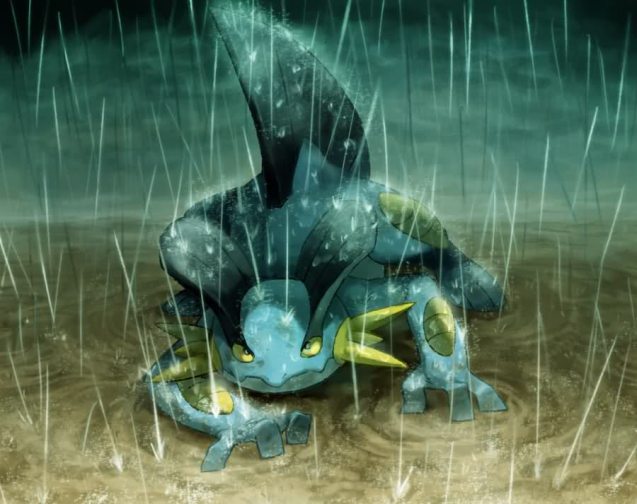
Swampert is a Water/Ground Pokémon. This means that its Primary Type is Water and its Secondary Type is Ground. Because of this, it has the unique traits of both Types. It is also one of my favorite Pokémon!
As with animals, there are many other ways to rank Pokémon taxonomically. We could break them into phyla, orders, families, genera, and individual species. Analysis of all taxonomic rankings like this would probably go on for pages and pages, so we will cut it off at classification by Type and the educated assumption that Pokémon are in fact part of Animalia. Even though these creatures are not real, it is always fun to speculate and dig into the “what ifs”. This curiosity and exploration is the whole basis for science fiction, one of the most popular genres of all time, and it enriches our imaginations and our lives.
References:
1. Myers, Phil. “Animalia (animals).” Animal Diversity Web. Univerisity of Michigan Museum of Zoology, 2001. Web. 04 Dec. 2015.
2. Ruggiero, Michael A., et al. “A higher level classification of all living organisms.” PloS one 10.4 (2015): e0119248.
3. Venn, A. A., J. E. Loram, and A. E. Douglas. “Photosynthetic symbioses in animals.” Journal of Experimental Botany 59.5 (2008): 1069-1080.
4. Trench, R. K. “The cell biology of plant-animal symbiosis.” Annual Review of Plant Physiology 30.1 (1979): 485-531.
5. Barbo, Maria S. The Official Pokémon Handbook. New York: Scholastic, 1999. Print.
6. “Type.” Bulbapedia. Web. 23 Dec. 2015.
7. Bloch, Jonathan I., Kenneth D. Rose, and Philip D. Gingerich. “New Species of Batodonoides (lipotyphla, Geolabididae) from the Early Eocene of Wyoming: Smallest Known Mammal?”. Journal of Mammalogy 79.3 (1998): 804–827.
Photo Links:
1.http://www.tanelorn.us/data/mycology/myc_kingdom.htm
2.http://www.aminoapps.com/page/pokemon/2097774/ditto
3.http://www.serebii.net/card/risingrivals/057.shtml
4.http://bulbapedia.bulbagarden.net/wiki/Larvitar_%28Pok%C3%A9mon%29
5.http://attackofthefanboy.com/guides/get-mew-pokemon-red-blue-yellow/





